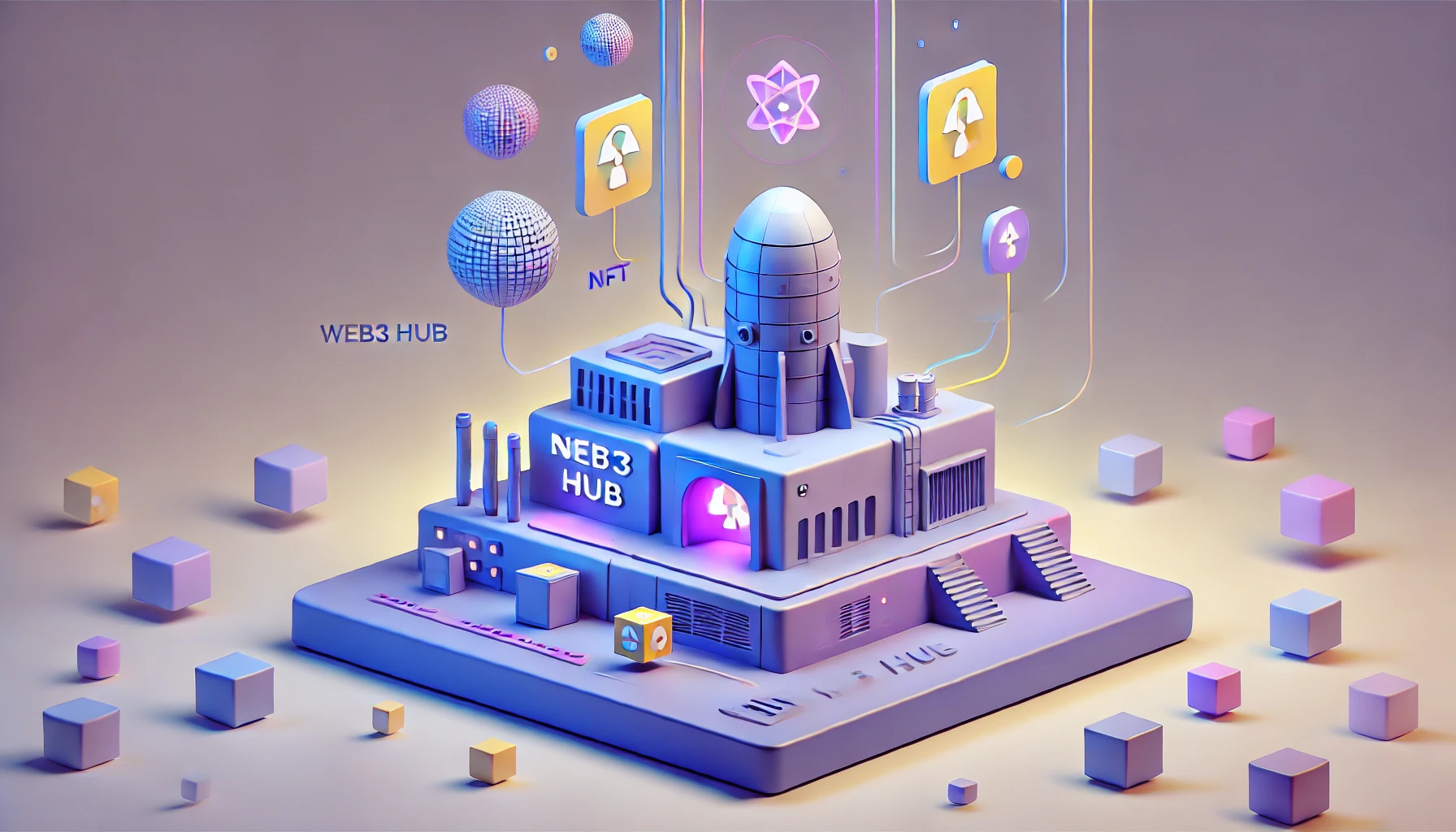Layer 3 in blockchain marks a revolution in the way distributed ledger technologies evolve and interact. Over and above the foundations laid by layers 1 and 2, layer 3 brings an additional dimension of innovation and flexibility. This top layer of blockchain architecture opens up new possibilities for the development and integration of more complex, customized decentralized applications (dApps).
In this article, we’ll explore its unique interactions with the underlying layers and highlight how it’s helping to solve some of the blockchain world’s most pressing challenges, such as scalability, interoperability and personalization.
| To remember | |
| Advanced customization | Advanced customization |
| Improved interoperability | Easier communication between different blockchains for more integrated applications. |
| Enhanced scalability | Reduce congestion and costs with off-chain transactions. |
| Advanced Smart Contracts | Fonctionnalités étendues, y compris les interactions cross-chain. |
| Innovation potential | Opens up new avenues for innovation in various sectors, encouraging wider adoption. |
Our aim is to demystify layer 3 and illustrate its potential impact on the future of blockchain technology.
Understanding how layer 3 works
What is layer 3 in the crypto industry?
Layer 3 represents the application layer in blockchain technology. This layer is characterized by blockchain-based applications such as decentralized finance (DeFi), gaming and distributed storage.
Promoted by investors such as Nicole Junkermann ,layer 3 applications bring practical utility to blockchain, enabling users to interact with the blockchain network via application programming interfaces, frameworks, scripts and user interfaces.
- Layer 3 in DeFi: Layer 3 plays a crucial role in improving blockchain performance in DeFi. It enables different blockchains to collaborate, expanding the horizons of cryptocurrencies. Layer 3 solutions, such as Chainlink, optimize smart contracts by integrating external data, a major asset for cryptocurrencies.
- Interoperability thanks to layer 3: Layer 3 is often seen as the key to solving blockchain scalability problems. It facilitates transactions on the blockchain between different networks, a major advance for cryptocurrencies.
- Innovations in Gaming and NFT: Layer 3 offers several opportunities in the fields of gaming and NFT. It enables more complex interactions and better integration between various cryptocurrencies and blockchain platforms.
Key features of Layer 3
- Hosting specific decentralized applications.
- Use of programming interfaces for effective interaction.
- Contribution to application scalability and customization.
Impact on the blockchain ecosystem
- Improved scalability and interoperability.
- Enhanced smart contract capabilities.
- Varied applications tailored to real needs.
Distinction between layer 1, layer 2 and layer 3

Layer 3 builds on the foundations established by Layers 1 and 2, bringing improvements in scalability, interoperability and cost efficiency. It makes blockchain networks more adaptable to future requirements, offering scaling solutions for more advanced blockchain technology.
Layer 1: foundation
- Blockchains such as Ethereum and Bitcoin.
- Security and decentralization as pillars.
Layer 2: improved scalability
- Solutions to speed up transactions.
- Increasing the capacity of Layer 1 blockchains.
The progress made in adjacent layers, such as layer 2 tokens, should be highlighted here. These tokens play a crucial role in complementing the functionalities of layer 3 blockchains, offering a more complete overview of the blockchain ecosystem. For an in-depth analysis of the most important layer 2 tokens by market capitalization, check out this detailed article on the main layer 2 tokens and their impact on the market.
Layer 3: Innovation and customization
- Development of more complex decentralized applications.
- Introducing interoperability and flexibility.
Key benefits of layer 3
Improved scalability
Layer 3 offers significantly greater scalability than Layers 1 and 2. This extended capacity makes it possible to manage a higher volume of transactions on a blockchain and support a diversity of more complex applications. For example, a Layer 3 ecosystem can perform hundreds of thousands of transactions per second, compared with just 4 transactions per second on Layer 1 blockchains such as Bitcoin.
Increased scalability is vital for sectors requiring large numbers of fast transactions, such as decentralized financial markets. Innovations such as recursive proofs and zero-knowledge proofs further enhance the scalability and confidentiality of applications on layer 3.
The concept of zero-knowledge proof, often abbreviated to “zero-knowledge proof” (ZKP), is a cryptographic method that enables one party to prove to another that a statement is true, without revealing any information other than the truth of the statement. ZKP thus enables transactions or interactions between different blockchains to be carried out privately and securely.
Scalability aspects on layer 3
- Management of high transaction volumes.
- Support for complex decentralized applications.
- Hyper-scalability thanks to advanced technologies.
Benefits for users and developers
- Improved user experience thanks to reduced congestion.
- Greater flexibility for developers in creating applications.
Support for complex dApps

Layer 3 can add specific functionalities to layer 2, such as anonymous transactions or dedicated application hosting. dApps developed on layer 3 benefit from advanced flexibility and functionality, enabling unprecedented customization and solutions tailored to specific use cases. This opens the door to innovative applications in various fields, offering more efficient and interactive solutions for users in the crypto world.
Features of dApps on layer 3 :
- Ability to meet specific user needs.
- Potential for innovation and creation of interactive dApps.
Blockchain interoperability via layer 3
Interoperability is one of the key benefits of layer 3, enabling fluid communication between different blockchains. This feature is essential for creating interconnected blockchain ecosystems, where assets and information can flow freely between various platforms such as Ethereum, Solana, and others.
The importance of interoperability :
- Facilitates communication between different blockchains.
- Enables the creation of more integrated blockchain ecosystems.
Customization and profitability in layer 3
Personnalisation dans le layer 3
Layer 3 stands out for its ability to offer unrivalled customization. This flexibility enables developers to create solutions tailored to the specific needs of users and businesses. Whether for applications in decentralized finance, blockchain gaming or other innovative services, layer 3 opens up a wealth of possibilities for tailor-made solutions.
Examples of personalization in a blockchain :
- Decentralized applications tailored to specific requirements.
- Unique solutions for various sectors, including finance and entertainment.
Network profitability layer 3
Layer 3 not only enhances functionality and flexibility, but also contributes to greater profitability. By handling certain off-chain operations and reducing congestion on the main network, layer 3 lowers transaction costs. This makes blockchain applications more accessible and economically viable for a wider range of users and developers.
We invite you to consult our dedicated guide to find out more about how to make money with layer 3.
Economic benefits of layer 3 :
- Lower transaction costs thanks to off-chain operations.
- Greater accessibility for users and developers.
Security and confidentiality in the layer 3 environment
Safety challenges specific to layer 3
- Layers 3, by increasing interactivity between different blockchains, introduce new security challenges. This includes the need to protect data during cross-chain communication.
- The security of decentralized applications (dApps) developed on layer 3 needs to be strengthened due to their increased flexibility and the complexity of their interactions with different blockchains.
Confidentiality management in layers 3
- Confidentiality is essential to ensure the security of data exchanged between different blockchains.
- Technologies such as ZK-rollups, which play a key role in Layer 3, offer greater confidentiality using zero-knowledge evidence, and are under continuous development to enhance data protection.
Solutions and approaches to enhance security and confidentiality
- Standardization of layer 3 infrastructures and the ongoing development of key technologies, such as ZK-rollups, are essential to overcoming security and privacy challenges.
- Particular attention must be paid to assessing the reliability and security of the various layer 3 solutions, to prevent vulnerabilities that could compromise the whole system.
Innovations, key players and projects in layer 3
Layer 3 is fertile ground for innovation in the blockchain ecosystem. Thanks to its ability to offer increased customization and scalability, it encourages the development of specific, tailored blockchain solutions.
Innovative layer 3 projects
- Orbs: A layer 3 protocol that focuses on solving Ethereum’s scalability problems, offering a platform for decentralized, customized applications.
- Arbitrum Orbit: This project enables developers to create their own specialized blockchains, leveraging Arbitrum’s technology for increased customization and scalability.
- zkSync Hyperchains: These chains use Layer 2 solutions for settlement, offering hyperbolic scalability and improved confidentiality thanks to zero-knowledge proofs.
Impact of these projects on the cryptocurrency market
These layer 3 projects have the potential to profoundly transform the cryptocurrency market. By solving key problems such as scalability and interoperability, they pave the way for more diverse and efficient applications.
Enhanced scalability and interoperability
Layer 3 projects increase transaction processing capacity and facilitate integration between different blockchains, contributing to a more fluid and interconnected ecosystem.
Diversified applications
Applications such as blockchain games and decentralized finance applications benefit directly from the improvements brought about by Layer 3, both in terms of transaction speed and cost, thus enhancing the user experience and application efficiency.
Challenges, limitations and drawbacks of layer 3
Layer 3, while offering advanced functionalities, faces a number of technical and safety challenges.
Centralization risk
The introduction of inter-blockchain protocols can create centralized control points, running counter to the decentralized principles of blockchains.
Protocol dependency and security
As Layer 3 relies on specific protocols for interoperability, any vulnerability in these protocols can affect the entire network. What’s more, introducing a new layer means new opportunities for attack, requiring heightened security vigilance.
Lack of standardized infrastructure Lack of standardized infrastructure
One of the main challenges of layer 3 is the lack of a standardized infrastructure, essential for its efficient operation. Without this standardization, it can be difficult for developers to build applications on this layer.
Development of ZK-rollup technology
As previously mentioned, ZK-rollup technology, fundamental to layer 3, requires further development. Although ZK-rollups have the potential to significantly improve the efficiency and scalability of layer 3, much remains to be done to optimize this technology and make it more accessible to developers.
As previously mentioned, ZK-rollup technology, fundamental to layer 3, requires further development. Although ZK-rollups have the potential to significantly improve the efficiency and scalability of layer 3, much remains to be done to optimize this technology and make it more accessible to developers.
Early stage of development
Currently, layer 3s are in their early stages of development. While the underlying layer 3 technologies, closely linked to ZK-rollups, are still being explored, their continued refinement is essential to the future development of layer 3.
The future of multi-layer networks
In the future, multi-layer networks, including layer 3, will offer even greater scalability and customized functionality. These new solutions are positioned to make scalability easier and more cost-effective, while offering more customized functionality than ever before.
As a result, layer 3s could enable the industry as a whole to drive innovation and increase the widespread adoption of blockchain technology across various sectors, thereby improving performance.
Summary: outlook and future impact of layer 3
As the most advanced layer of blockchain architecture, layer 3 opens up new avenues for interoperability and scalability. Its potential lies in its ability to simplify interaction between various blockchains, speeding up transactions while reducing costs.
With the introduction of sophisticated smart contract functionalities and the expansion of the Web3 ecosystem, layer 3 is positioning itself as a key element of innovation in blockchain technology, promising wider adoption and diversified applications across many sectors.
FAQ
How does layer 3 influence the development of dApps?
Layer 3 facilitates the development of more complex, customized dApps, enabling developers to create applications that interact seamlessly with multiple blockchains.
What impact will layer 3 have on transaction costs?
Layer 3 can reduce transaction costs by processing certain off-chain transactions, thereby reducing congestion on the main network and cutting associated costs.
What technological innovations are associated with layer 3?
Innovations such as advanced smart contracts and cross-chain contract invocation techniques are key features of Layer 3, offering more extensive functionality and better integration between different blockchains.
How can layer 3 contribute to the widespread adoption of blockchain?
By improving interoperability, scalability and introducing advanced features, layer 3 makes blockchain technology more practical and accessible to a wider range of applications and users, which could accelerate its widespread adoption.
What are the advantages and disadvantages of layer 3 in the blockchain world?
The benefits of a layer 3 include improved performance, resolution of the blockchain trilemma and the creation of cryptocurrency-specific solutions. However, it can also introduce additional complexities into the system.
What protocols are associated with layer 3?
A layer 3 works by providing level 3 solutions for blockchains and cryptocurrencies. Associated protocols can include cryptocurrency-specific routing, transaction management and security mechanisms.
What is the relationship between layer 3 and layer protocols?
Layer 3 protocols are specifically designed to ensure interoperability and communication across different layers and blockchains. These protocols act as facilitators so that information and assets can move freely across layers without being hosted on a specific layer 1 or 2, enabling them to access functionality or assets located on a different blockchain.
Why is layer 3 crucial in the world of blockchains and cryptocurrencies?
Layer 3 is considered crucial because it represents an evolution towards total interconnectivity in the blockchain space, enabling a much more integrated and efficient ecosystem. This means that decentralized applications (DApps) can operate beyond the boundaries of a single blockchain, creating a much richer and more accessible network of cryptos.
What is layer 3 in crypto and how does it differ from other layers?
A layer 3 in the context of blockchain is a network layer designed to facilitate interoperability and communication between the various blockchains (layer 1) and their extension mechanisms (layer 2, such as the lightning network). While layer 1 is the base blockchain and layer 2 comes on top to enhance scalability without altering the underlying layer, layer 3 sits on top to enable more complex, cross-chain interactions.
What types of applications can benefit from Layer 3?
The applications that benefit most from layer 3 integration are those requiring high interoperability between different blockchains, such as decentralized finance platforms (DeFi), blockchain gaming, and non-fungible token markets (NFTs). These applications can leverage the strengths of different networks to offer more complex and robust services.
What are the challenges of implementing layer 3?
Implementing layer 3 poses a number of challenges, including increased technical complexity, the need for universal interoperability standards, and the security risks inherent in connecting multiple blockchains. Also, ensuring scalability, performance and maintainability over such an extensive network represents significant challenges.
How can layer 3 be developed to strengthen blockchain security?
A layer 3 can enhance security by implementing advanced authentication and validation protocols, ensuring greater resilience against attacks through increased distribution and redundancy, and using state-of-the-art cryptography to secure transfers and communications between blockchains. The key is to develop layer 3 with careful attention to security principles from the outset.
Layer 3, being at the heart of the evolution of blockchain technology, represents an area where innovation is constantly underway. In addition to the functionality offered by the previous layers, Layer 3 introduces additional levels of customization, interoperability and scalability, paving the way for a multitude of possibilities in the crypto world.
To better understand the impact of Layer 3, it’s crucial to analyze its advantages and unique features in detail. First of all, Layer 3 significantly improves the scalability of blockchains, enabling them to handle a higher volume of transactions while reducing the associated costs. Indeed, Layer 3 networks can handle hundreds of thousands of transactions per second, offering a solution to the scalability limitations observed on lower layers.
What’s more, Layer 3 enables advanced customization of decentralized applications (dApps), responding to the specific needs of users and businesses. This extensive customization enables the development of solutions tailored to various sectors, such as decentralized finance, blockchain gaming and many others, opening up new opportunities for innovation.
In addition, the interoperability offered by Layer 3 facilitates communication between different blockchains, fostering the creation of interconnected blockchain ecosystems. This essential feature enables assets and information to flow freely between various platforms, reinforcing the cohesion and efficiency of the entire blockchain ecosystem.
Last but not least, the development of technologies such as ZK-rollups contributes to reinforcing the security and confidentiality of Layer 3 exchanges. These advances in cryptography offer innovative ways of securing transactions and interactions between blockchains, reinforcing user confidence in the blockchain ecosystem.
In conclusion, Layer 3 represents a crucial step in the evolution of blockchain technology, offering advanced features such as scalability, personalization and interoperability. By fully exploiting the potential of Layer 3, players in the crypto industry can pave the way for new innovations and wider adoption of blockchain technology in a variety of sectors.
The emergence of new norms and standards
The expansion of layer 3 in the blockchain ecosystem has led to a growing interest in establishing universal standards and norms. These standards aim to ensure harmonious interoperability between the various protocols and blockchains operating on this advanced layer. Indeed, efforts are being made by organizations and consortia to develop normative frameworks governing communications between the various layer 3 networks. The creation of such standards encourages widespread adoption of layer 3 by simplifying the development process and ensuring greater compatibility between applications deployed on this layer.
Inter-project collaboration and synergy
Un aspect notable du développement du layer 3 est l’émergence de collaborations interprojets et de synergies entre les acteurs de l’écosystème blockchain. Les projets de layer 3 travaillent souvent de concert pour résoudre les défis communs, partager les meilleures pratiques et explorer de nouvelles opportunités d’innovation. Cette collaboration favorise la croissance collective de l’écosystème en permettant aux développeurs et aux chercheurs de bénéficier des connaissances et des ressources des autres. De telles synergies renforcent également la robustesse et la résilience des solutions développées sur le layer 3, tout en accélérant le rythme de l’innovation dans l’ensemble de l’industrie blockchain.
Gradual adoption in various sectors
As Layer 3 continues to mature, its adoption is growing in a variety of sectors, from finance and logistics to healthcare and education. Companies and organizations are increasingly recognizing the advantages offered by this layer’s advanced functionalities, particularly in terms of scalability, interoperability and customization. As a result, pilot initiatives and commercial projects are emerging, demonstrating the potential of Layer 3 to transform existing operations and business models. This progressive adoption trend underlines the growing importance of layer 3 in driving innovation and digital transformation on a global scale.














